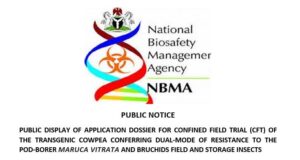Back to: Botany 400 Level
Hello, my brilliant Afrilearn learner! I hope you’re doing well and ready to take on another exciting lesson in biotechnology today! This time, we’re going to discuss some important techniques used in genetic analysis — RFLP, AFLP, RAPD, SSRs, and SNPs. These techniques are tools scientists use to study DNA, helping us to understand genetic variation, identify genes, and much more. Don’t worry — we’ll break it all down in simple terms so you can understand the key differences and uses of each method. Let’s dive in!
Types: RFLP, AFLP, RAPD, SSRs, SNPs
Imagine you’re a detective, trying to figure out the DNA fingerprints of different plants, animals, or even humans. To do this, scientists use different techniques to study genetic material. Each of these methods has its own strengths and is useful for different purposes. Let’s look at these genetic markers one by one and understand how they work.

Types of Genetic Markers
- RFLP (Restriction Fragment Length Polymorphism)
What is it?
RFLP is a technique used to detect differences in the DNA sequence by cutting the DNA with special enzymes known as restriction enzymes. These enzymes break the DNA into smaller pieces, and the length of these pieces (fragments) can be used to identify genetic differences between individuals or species.
How it works:
The DNA is treated with restriction enzymes, which cut it at specific locations. The resulting fragments are then separated by size using gel electrophoresis. Scientists can compare the pattern of fragments (banding patterns) to find variations.
Where it’s used:
RFLP is useful in genetic mapping, forensic investigations, and genetic diversity studies.
- AFLP (Amplified Fragment Length Polymorphism)
What is it?
AFLP is similar to RFLP, but instead of looking at DNA fragments directly, it amplifies certain regions of DNA before detecting the differences. It’s a combination of restriction enzyme digestion and polymerase chain reaction (PCR) amplification.
How it works:
The DNA is first cut by restriction enzymes, and then specific DNA fragments are amplified using PCR. The amplified fragments are then separated, and their patterns are analyzed to find genetic differences.
Where it’s used:
AFLP is often used in genetic fingerprinting, population genetics, and plant breeding because it can provide a lot of information with relatively little DNA.
- RAPD (Random Amplified Polymorphic DNA)
What is it?
RAPD is a quick and simple technique to analyze genetic variation using random primers to amplify DNA. The resulting PCR products are then analyzed to determine genetic differences.
How it works:
Short, random segments of DNA are amplified using PCR without the need for prior knowledge of the sequence. The patterns of the amplified DNA (whether a fragment is present or not) are compared. - Where it’s used:
RAPD is widely used in genetic mapping, marker-assisted selection, and identifying genetic differences in species that lack detailed genetic information. - SSRs (Simple Sequence Repeats)
What is it?
SSRs, also called microsatellites, are regions of DNA that contain short, repeated sequences. These repeats can vary in length between individuals, making them excellent markers for genetic diversity.
How it works:
SSRs are analyzed by polymerase chain reaction (PCR) to amplify the repeating regions. The variation in the number of repeats (e.g., 5 repeats vs 6 repeats) is used to identify genetic differences between individuals.
Where it’s used:
SSRs are commonly used in genetic mapping, forensics, marker-assisted breeding, and population studies due to their high level of variation.
- SNPs (Single Nucleotide Polymorphisms)
What is it?
SNPs are the most common type of genetic variation, where just one nucleotide (the buildingblocks of DNA) is altered. A single change in the DNA sequence can affect gene function and is used to identify genetic traits. - How it works:
SNPs are identified by looking at individual base pair differences in the DNA sequence. They are often detected through sequencing or specific probes that bind to particular SNP sites. - Where it’s used:
SNPs are crucial in genomic studies, genetic disease research, personalized medicine, and breeding programs because they can pinpoint precise genetic variations that may cause traits or diseases.

Summary
Here’s a quick recap of the key techniques we’ve looked at:
- RFLP: Detects DNA fragment length differences using restriction enzymes.
- AFLP: Amplifies DNA fragments to study genetic variation.
- RAPD: Uses random primers for quick DNA amplification to identify variations.
- SSRs: Looks at short repeated DNA sequences for genetic diversity.
- SNPs: Identifies single-nucleotide changes in DNA for precision in genetic studies.
Evaluation
- What is the main difference between RFLP and AFLP techniques?
- How does the RAPD technique identify genetic variation?
- Why are SSRs considered useful in plant breeding?
- How do SNPs help in understanding genetic diseases?
You’ve now explored some of the most important techniques used in genetic analysis — and with this knowledge, you’re ready to understand how scientists use these methods to make discoveries and improve agriculture. Whether you’re working with plants or animals, these techniques will be crucial in advancing research. Keep up the great work, and keep your curiosity alive as we move into the next topic! You’re doing awesome! Keep shining!
